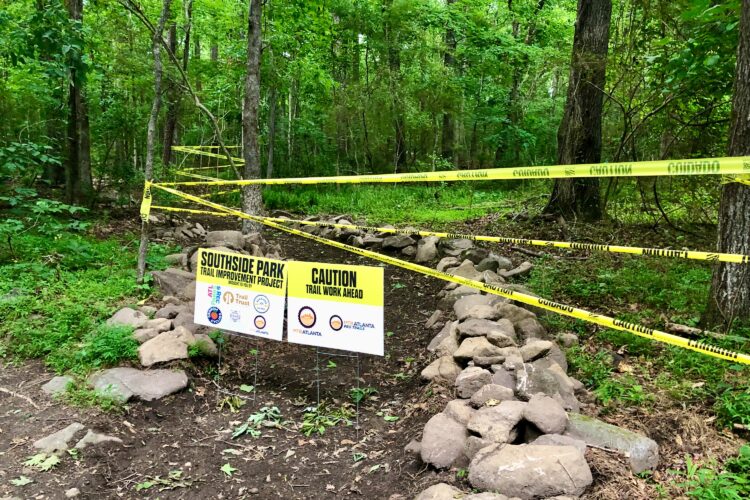 Hikers and equestrians offer a number of reasons for why mountain bikers shouldn’t be allowed to use certain trails but perhaps their most compelling arguments center around safety concerns. I’m sure most of us have been, at one time or another, a hiker on a singletrack trail and been startled by a mountain biker appearing out of nowhere at speeds in excess of 20mph. I’m not saying 20mph is fast or dangerous (I’ve been known to get well above that myself), but it is startling when you’re not expecting it. For example, I would personally never go hiking at a place like the Chapel Hill HS trails just because I know a lot of people ride there and I’d be constantly looking over my shoulder for bikers.
Hikers and equestrians offer a number of reasons for why mountain bikers shouldn’t be allowed to use certain trails but perhaps their most compelling arguments center around safety concerns. I’m sure most of us have been, at one time or another, a hiker on a singletrack trail and been startled by a mountain biker appearing out of nowhere at speeds in excess of 20mph. I’m not saying 20mph is fast or dangerous (I’ve been known to get well above that myself), but it is startling when you’re not expecting it. For example, I would personally never go hiking at a place like the Chapel Hill HS trails just because I know a lot of people ride there and I’d be constantly looking over my shoulder for bikers.
Equestrians have an even harder time with bikes and I’ve never seen a horse that wasn’t completely freaked out by the sight of me on my bike. I really hate encountering horses for this reason and I generally stay away from trails where bikers share a path with horseback riders. But you don’t see me petitioning to keep horses off the trails I enjoy…
Yet the debate rages and no one seems to have a solution to these trail user conflicts. I think most of us can see each group’s side of the argument and everyone has a different idea about how to enjoy the trails (either by hoof, foot, or wheel). Here are three solutions that can help resolve trail use impasses:
1. Alternate trail usage. This is how the world-class Tsali trail system is managed and it works great for the most part. Mountain bikers get half the trails on day 1 while equestrian users ride the other trails. On day 2, mountain bikers and equestrians switch. Simple enough, and this way, mountain bikers can ride fast without the fear of spooking large, stupid animals. Hikers can use any trail any day but there’s nothing to say hikers couldn’t have their own rotation as well. In fact, I kinda wish hikers did have their own trail days at Tsali – we once ran into a dude with a shotgun on the Thompson Loop. Talk about scary!
2. Warn hikers in a standardized way. One thing mentioned in the Singletrack MINDS documentary was that bikers could ride with a bell attached to their bikes on certain trails. This way, hikers could hear bikers coming from a long way off and prepare accordingly. Kinda like a bear bell for your dog but I think I might be annoyed riding with a bell. I mean, bikers like the solitude of nature sometimes too so this solution probably won’t make everyone happy. Maybe we could all just get those fancy clicking freehubs so hikers can hear us coasting down the trail?
3. Impose speed controls. This is probably my least favorite solution but if it’s the only way to get bikes access to gnarly trails then it should be done. Some trails employ rangers to check bikers’ speeds but this is pretty hit or miss and it just leads to more conflicts. Instead, why not design some speed control devices into the trail? Gnarly rock gardens, tight trails, and super technical spots will slow down even the best riders and you don’t even have to pay the obstacles an hourly wage! If you’re a biker don’t blaze new trails around the obstacles though, that just makes a bad situation worse.
Everyone wants to enjoy singletrack trails in their own way and unfortunately the desires of hikers, bikers, and equestrians are oftentimes mutually exclusive. By alternating trail usage or coming up with creative ways to eliminate these conflicts, land managers can create a peaceful recreation setting for everyone to enjoy.
Editor’s note: This is the first in a series of posts about mountain bike trail access issues. The next post in the series will discuss the environmental impact mountain bikes are said to have on trails. Don‚Äôt miss it!




















0 Comments